Magick and Hypnosis
VIP免费
2024-12-23
1
0
197.95KB
16 页
5.9玖币
侵权投诉
ero-entertainer
Magick and Hypnosis
(Annotated 1999 by the Author.)
by Carroll “Poke” Runyon, M.A.
(Note: This article first appeared in Llewellyn Publication’s
GNOSTICA, vol 5, no. 9, whole no. 45)
In this article the author takes the position that hypnosis is the
operative technique of Ceremonial Magick. Visions of Spirits
appearing in the Triangle of Art are actually archetypes evoked from
the deep-mind via hypnotic induction. As a practicing magician
specializing in these methods, he gives an insider’s perspective on
how Magick really works.
I recently received a letter from a man who claimed to be an
investigator of paranormal phenomena. After a few introductory
remarks he came quickly to the point: “Can you demonstrate that the
techniques you practice and teach are authentic and effective, not
merely hypnotic and illusionary?”
My reply was somewhat blunt: “Ceremonial Magick is a valid
art, not a pseudo-science,” I wrote. “Certainly its visions are hypnotic
and they are no more illusionary than are Jungian Archetypes in the
Collective Unconscious – which, in fact, is what they actually are.
Their existence cannot be proved or disproved in a high-school physics
lab.”
I posted my answer with a sense of satisfaction, but in the
days that followed I began to realize there was a great deal more
involved in this question than could be answered in one clever
paragraph. The present occult revival has been underway for a decade,
but there are still only a few people who actually practice ceremonial
magick – and this situation persists in spite of hundreds of different
books on the subject in constant circulation. Why? The reason is that
many, if not most, of our modern occultists are just as naïve about the
true nature of magick as was my correspondent. Ceremonial Magick is
ritual hypnosis. As Dion Fortune put it: “Magick is the art of causing
changes in consciousness to occur in accordance with the will”
[emphasis mine]. The reason why so few people practice magick is not
that there are so few students of the art -- there are thousands – but that
only a few know the real secret. (1.)
Granted, there are a number of magicians who will grudgingly
concede this hypnotic definition, but in order to be a successful modern
magus, I feel you should embrace the concept! By taking such a plunge
you simultaneously improve your technique, confirm your results,
confound your critics and make an honest person of yourself. Don’t
worry about betraying some great tradition; magick was always
hypnotic. Don’t worry about being “scientific”, scientists don’t know
what hypnosis is, and most of them will admit that they don’t.
ero-entertainer
The Basic Business of the Magician:
If magick was always hypnotic and if the kabbalah always taught that
the inner microcosom was the key to personal transformation, then
why, for the past hundred years , have we been skipping over, or
completely ignoring, the fundamental principles of magick? Lost in a
maze of quasi-masonic initiations, and quasi-Freudian sexual
speculations, we have forgotten that the basic business of the magician
is to command spirits (i.e. components of his personality). He summons
them to visible appearance and then compels them to perform tasks for
him – well, that’s what he used to do back in Renaissance times, but
our more recent Victorian forbears of The Golden Dawn were not able
to reconstruct the old method of magical evocation because they
refused to accept its hypnotic basis. Certainly there is more to magick
than evocation, but that is where it starts: in the magick mirror of Yesod
with the ritual of the Goetia of the Lemegeton. (2.) This hypnotic
system, if properly employed in the Jungian psychoanalytic process of
individuation, can be a cornerstone of successful lodge work.
Before we discuss the characteristics of magical hypnosis, we
need to look a little more deeply into the historical and philosophical
reasons why this essential principle of the art has been overlooked and
underrated.
The Victorian and Edwardian magicians were more
reactionary and superstitious (relatively speaking) than their
Renaissance counterparts. They bequeathed to us a legacy of quaint
and whimsical ideas about magick. We still find ourselves grappling
with their outdated conceptions of “secret chiefs” who come from an
“astral world” that might as well be another planet. Hypnosis was a
dirty word in this Victorian fairyland not because it was scientific, but
because it was subjective. In this case the tendency to objectify magical
phenomena is characteristic of philosophical dualism. It will be
recalled that the dualist believes God to be separate from his creations,
whereas the monist holds that God is present in all things. (For a more
lengthy discussion of these ideas see my Negative vs. Positive Gnosis
in Gnostica, No. 40 ) (3.)
The Kingdom of God is Within
At this point the romantic reader may be experiencing something of a
let-down. Am I saying that angels, demons, Goddesses and Gods of old
are only figments of the individual imagination? Certainly not! The
Gods are real and their power is awesome. Hypnosis is the key to
entering their kingdom, the Olam Yetzirah, or astral plane; but we must
realize that this other dimension begins within ourselves, in our
subconscious mind. If we go deep enough we venture beyond our own
personal dreams into what Carl Jung called the “collective
unconscious”, that vast realm where the archetypal Gods abide. (4.)
Make no mistake about it, the collective unconscious is a reality that
goes beyond anyone’s individual conception of it. It contains the entire
history of the human race and probably the destiny of mankind as well.
It is certainly linked to the Anima Mundi, the World-Soul-Earth-
Goddess of the Renaissance magicians. I hold that its sensitivities
extend throughout the solar system, and I suspect that it is intrinsically
related to the DNA code. These ideas are philosophically monistic in
ero-entertainer
accordance with the teachings of Hermes Trismegistus and the
doctrines of the kabbalah. (5.)
When the student fully grasps the significance of the
collective unconscious in relation to the Hermetic kabbalah, he will not
need to ask such questions as Carlos Casteneda put to Don Juan: “Did I
really fly?” The objective vs. the subjective argument will no longer
involve a value judgment, but only a matter of relative perception. This
may be a difficult hurdle for some to leap, but the rewards are infinite.
The dualist seeking objective phenomenon – e.g. photographable
ghosts, apparitions formed from “ectoplasm” and the like – is
constantly in danger of disillusionment. The more he tries to justify his
beliefs, the more antirational he becomes. For him occultism is a long,
down-hill slide away from the intellectual position – whereas, if
properly pursued on monistic-subjective principles; the study and
practice of magick should expand and extend the consciousness,
thereby improving the intellect.
The reader might agree with most of what I have said, and yet
still raise the question: ‘what about Aleister Crowley?’ Wasn’t he
subjective in his approach to magick, and didn’t he practice the goetic
thaumaturgy of the Lemegeton?
Yes, but even though Crowley wrote an excellent
psychological introduction to Mathers’ translation of The Goetia,
showing that he understood the subjective nature of the system, neither
he or his mentor knew the operative technique. Crowley spent many
weary hours trying to conjure a spirit to visible appearance in smoke
over the Triangle of Art. Now smoke is probably the worst hypnotic
focal point anyone could imagine, but a pretty good medium for an
experiment in telekinesis; a totally objective process. (6.) If Crowley
had realized that the system was hypnotic, he probably would have
used a crystal or a dark mirror. With this proper equipment results
would have been achieved within fifteen or twenty minutes of work.
Why didn’t he realize this? Mathers’ ignorance of the hypnotic factor
is easier to understand. He was a Quixotic medievalist who insisted on
objectifying everything. He believed that the Key of Solomon was
actually written by the Biblical monarch himself! However Crowley
should have known better.. Even so, I think that three factors may have
combined to keep Crowley from discovering the real secret of
Renaissance ceremonial magick: first, the prevailing opinion of the
time in the area of phenomenology ran to objective, pseudo-scientific
causes such as the ectoplasm of the spiritualists; second, Crowley was a
philosophical dualist which thrust him toward objectified conceptions
even though he was less credulous than Mathers; and third, he was
deeply into drugs. Such agents tend to activate their own unique
effects, whereas ritual hypnosis is a more directed vehicle, through
which the magician can produce a desired effect in accordance with his
will.
What is Hypnosis?
What is hypnosis? Nobody really knows, but we do know several
things about it. One thing we know: it isn’t sleep. In the physical
(blood pressure, etc.) the hypnotic trance is more like the normal
“awake” condition. Putting together several modern definitions of
hypnosis, we can come up with something like this: hypnosis is a state
ero-entertainer
of heightened suggestibility in which the mind is totally centered on
one idea to the exclusion of everything else, including sensory
perceptions that are unwanted or distracting.
By this definition anyone who is really concentrating on
something, like reading a book, or even watching television, may be
said to be in a hypnotic trance. They certainly are. Gurdjieff went so far
as to suggest that most people are hypnotized most of the time. To
achieve their potential they had to become “de-hypnotized”. The point
is that any routine task can become hypnotic. Here in southern
California, for instance, we are all familiar with the freeway driving
trance. There are also musical trances, dancing trances, etc. There may
even be a general everyday living trance – as Gurdjieff intimated.
These trances are different, and they have different levels of intensity,
and sensory selection. If a person is deeply engrossed in a book he may
not hear the phone ring, whereas if he is listening to the radio with
“one ear”, he will hear the phone. Hypnosis is a normal and common
condition. It is the unusual behavior associated with the deeper
cataleptic and somnambulistic trances that seem strange and
mysterious.
Hypnosis was known and used in ancient Egypt, where
magician-priests officiated at “sleep temples” in which sufferers of
various afflictions were cured by visitations of the Gods – most
probably while the patients were in a somnambulistic trance. Egyptian
magicians hypnotized animals such as lions and cobras. In India the
occult hypnotist first hypnotizes himself before operating on his
subject. This is a most magical approach and very effective. It seems
unknown outside of esoteric circles.
From ancient times up into the 1840’s the phenomenon was
thought to be the result of the manipulation and transmission of life
force: a subtle substance called “spirit”, or in the East, “kundalini.”
This concept is not as objective, or as simplistic, as it first appears.
The great Renaissance magus Marsilio Ficino, theorized that the flow
of spirit, by the rites of astrological magick, to improve the health and
intellectual capabilities of the operator. (7.) Ficino did not extend his
method to include the influencing of spirit in others – which would
have been a dangerous in his time – but such a capability is implicit in
his theory.
Many medieval and Renaissance magi solicited the
intercession of angels and demons in what Daniel Walker calls
“transitive operations” (for or against others), but before we assume
that this practice was entirely dualistic and objectified, we should
remember that these operators derived their philosophy from the
Hermetic Holy Book known as The Asclepius, which plainly taught
that angels, demons and gods of the earth sphere were originally
creations of man himself! The magicians of the Renaissance knew
very well that such entities were subjective. We might even call their
magical pantheism a proto-Jungian archetype theory in its own right.
They were also well aware of the powers of “fascination”, which they
attributed to rays of “spirit directed from the eyes of the enchanter.”
These magicians were monistic in their philosophy; subjective visions
were as important as objective phenomenon. They can perhaps be
criticized for not caring to differentiate between the two.
The crystal ball and the dark speculum (mirror) were their
most important items of ritual equipment. Their use was linked to
theories of celestial rays, planetary sympathies and the like, but the
摘要:
展开>>
收起<<
MagickandHypnosis(Annotated1999bytheAuthor.)byCarroll“Poke”Runyon,M.A.(Note:ThisarticlefirstappearedinLlewellynPublication’sGNOSTICA,vol5,no.9,wholeno.45)InthisarticletheauthortakesthepositionthathypnosisistheoperativetechniqueofCeremonialMagick.VisionsofSpiritsappearingintheTriangleofArtareactually...
声明:本站为文档C2C交易模式,即用户上传的文档直接被用户下载,本站只是中间服务平台,本站所有文档下载所得的收益归上传人(含作者)所有。玖贝云文库仅提供信息存储空间,仅对用户上传内容的表现方式做保护处理,对上载内容本身不做任何修改或编辑。若文档所含内容侵犯了您的版权或隐私,请立即通知玖贝云文库,我们立即给予删除!
分类:外语学习
价格:5.9玖币
属性:16 页
大小:197.95KB
格式:PDF
时间:2024-12-23




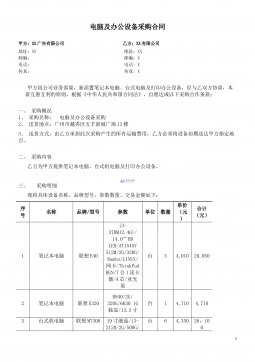






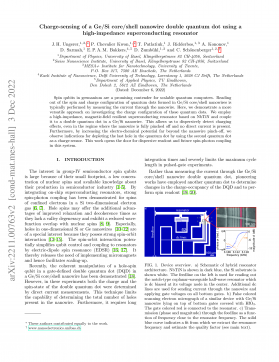
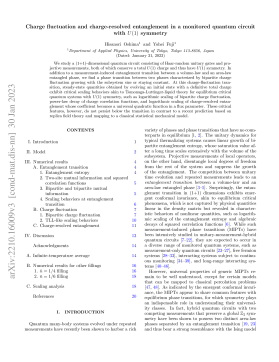

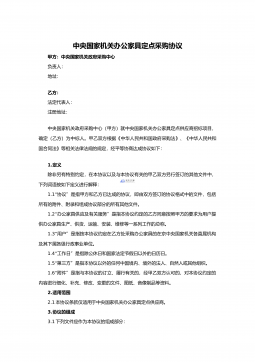


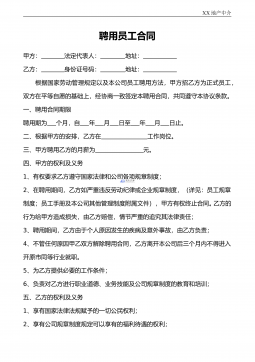
 渝公网安备50010702506394
渝公网安备50010702506394
